When planning my recent New York trip, one thing I knew I’d missed on previous visits was Ellis Island, the point at which the many thousands of immigrants from across Europe and beyond landed between the 1800s – 1900s before entry in to the United States. I’m fascinated by these stories and knew I wanted to visit the on-site Museum.
Even better, it can be combined with a visit to Liberty Island – home to the Statue of Liberty – on a “cruise” (it’s a short 10 minute boat ride). It makes a perfect day trip if you’re in to the history of New York City and America more widely.
Contents
Planning a trip to Ellis Island
- Statue City Cruises are the ONLY AUTHORIZED OFFICIAL PROVIDER of tickets to the Statue of Liberty National Monument and Ellis Island. Please be aware that Street Vendors do NOT sell genuine Statue of Liberty or Ellis Island tickets. Avoid Street Sellers.
- Tickets can be bought online in advance for around £20, or at the ticket office in Battery Park.
- There are dozens of street sellers the moment you get to Battery Park – they are not selling the legitimate tickets, just boats that whizz past each but don’t allow you to disembark.
- If you don’t want to get off at either island, and just want to see The Statue of Liberty up close, then I recommend continuing through Battery Park to the Staten Island Ferry to buy tickets instead – this will give you good, and much cheaper view, of the Statue of Liberty.
- If you do want to disembark and explore both islands; I recommend buying tickets for the first boat of the day as it’s such a popular trip and gets super crowded.
- You have to go through airport level security, but can take backpack size and below bags with you.
- There is a café on both islands, but the food quality isn’t great.
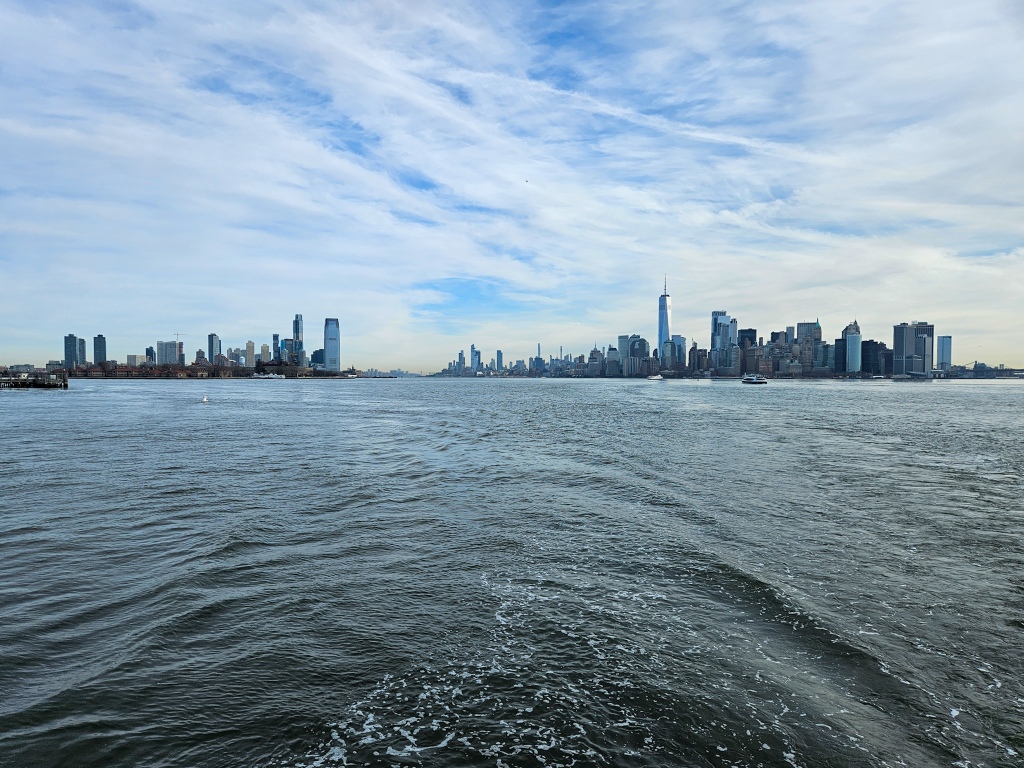
The Ferry Ride
The Statue City Cruise boats leave from Battery Park. You can find the right pier by following the signs throughout the park. Your ticket time is for entry to the security line, but they don’t really check timings. We had tickets for 9.15am to the line, but arrived at 8.55am and were able to board the 9am ferry instead (which ended up working really well).
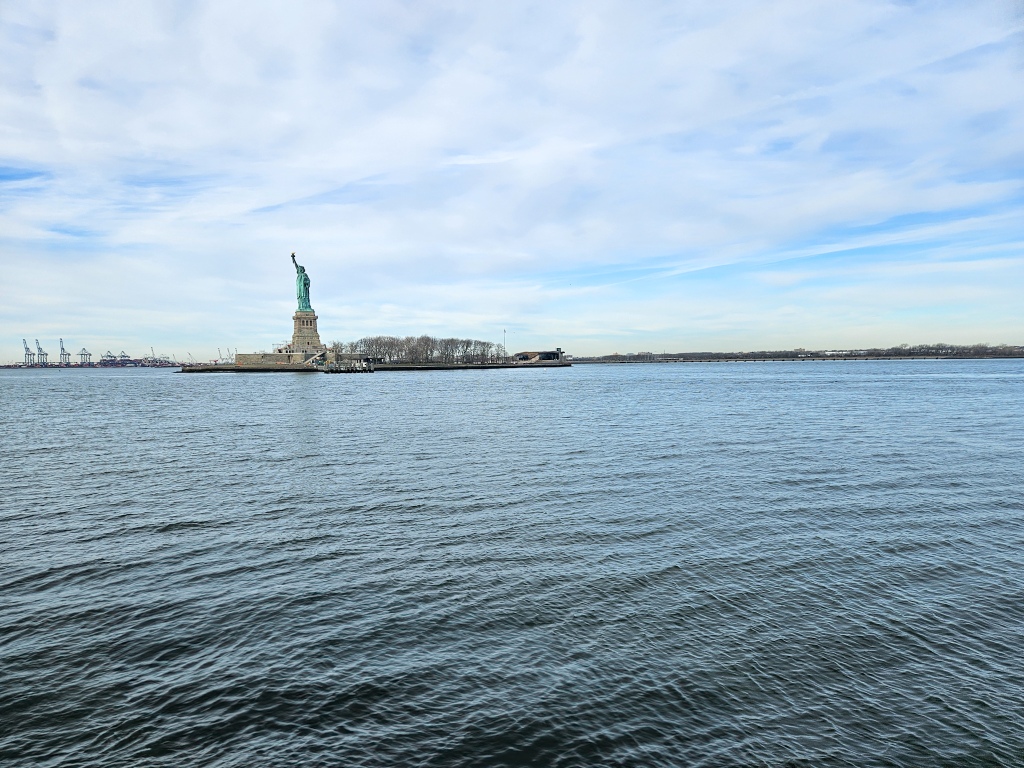
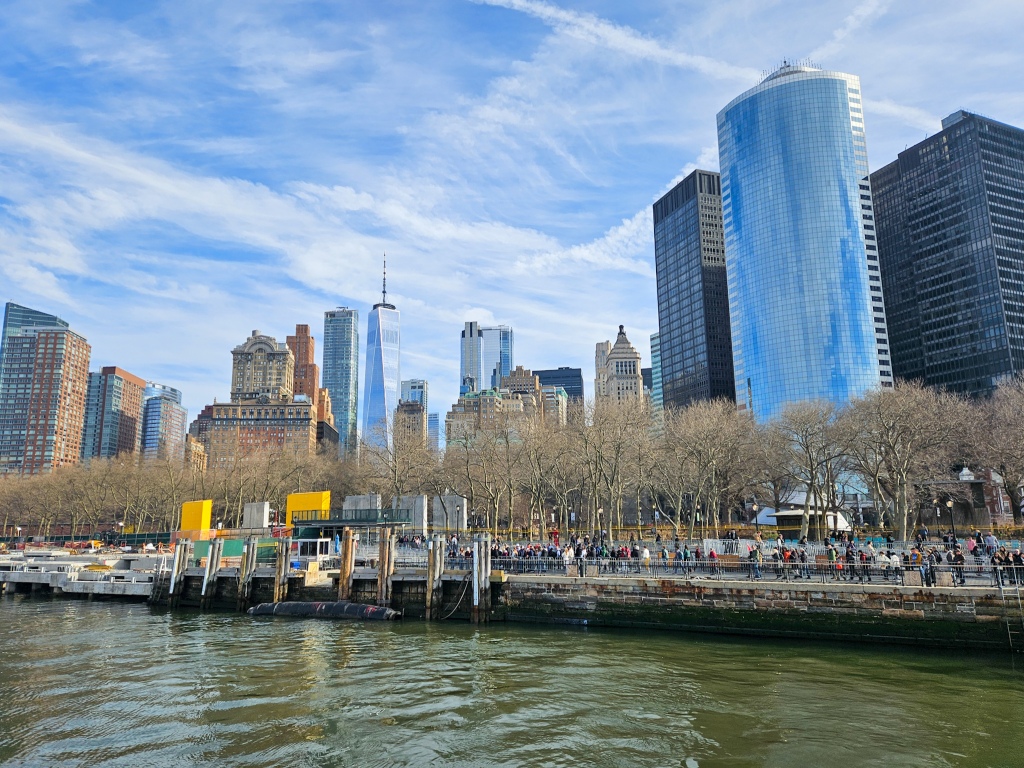
The trip is popular, so for us the Ferry was standing room only – but I didn’t mind, the views were so breathtaking. As we pulled away from the pier, I couldn’t believe the absolutely stunning views back to Manhattan; with the air and sun on my face, I couldn’t help but smile despite the crowds.
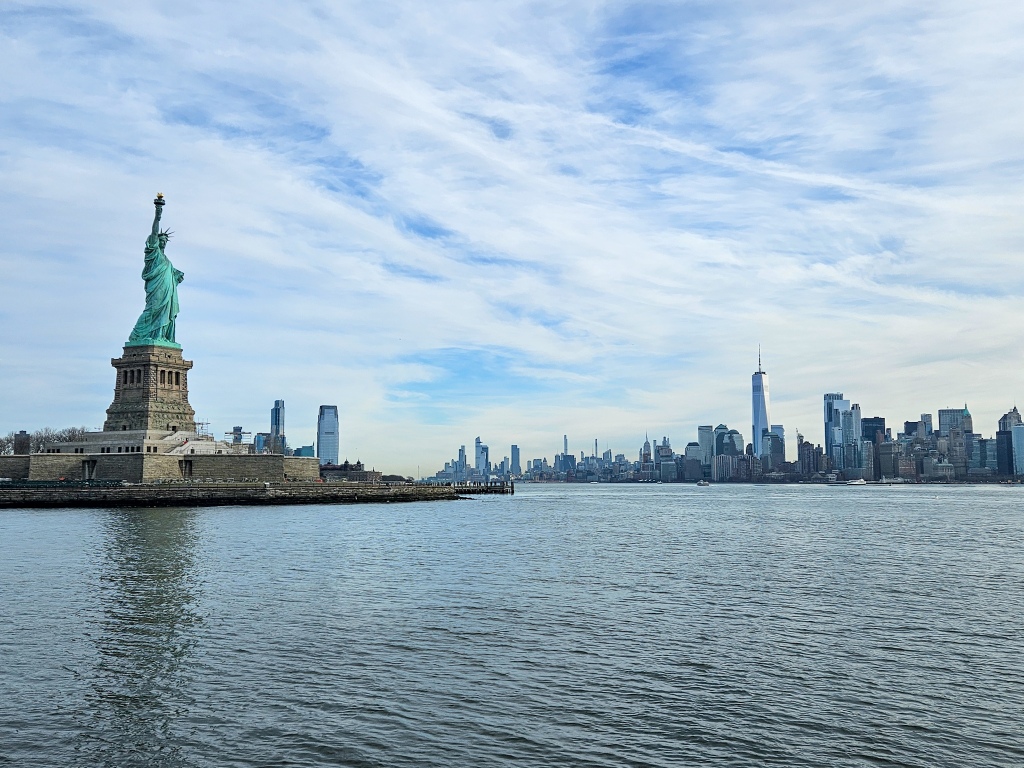
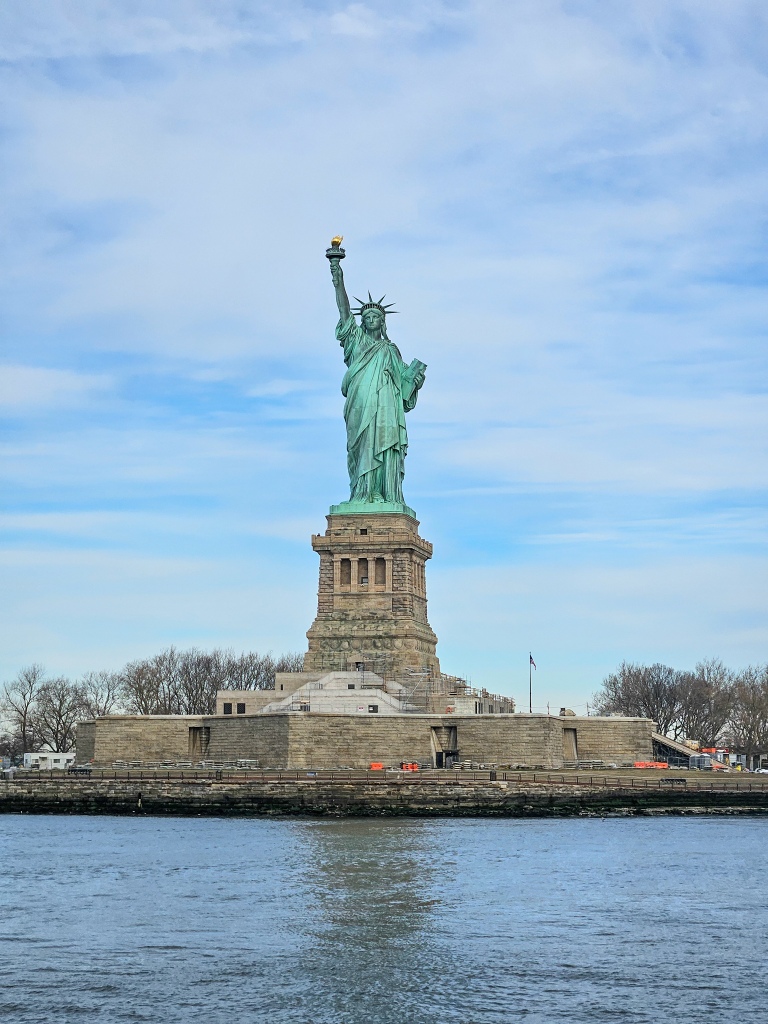

Liberty Island
The first stop on the trip is Liberty Island. Pretty much the entire ferry of about 500 people got off. So, given we’d seen Lady Liberty a few times before, we decided to not bother and to continue to Ellis Island to avoid the crowds.
If you do disembark at Liberty Island, there are a few things to do on the island:
- Visit the Museum on Lady Liberty’s history and how she was built (included in basic entry ticket)
- Walk around the pedestal of the Statue (additional charge, to be selected at time of booking)
- Climb to the Statue of Liberty’s crown (additional charge, to be selected at time of booking)
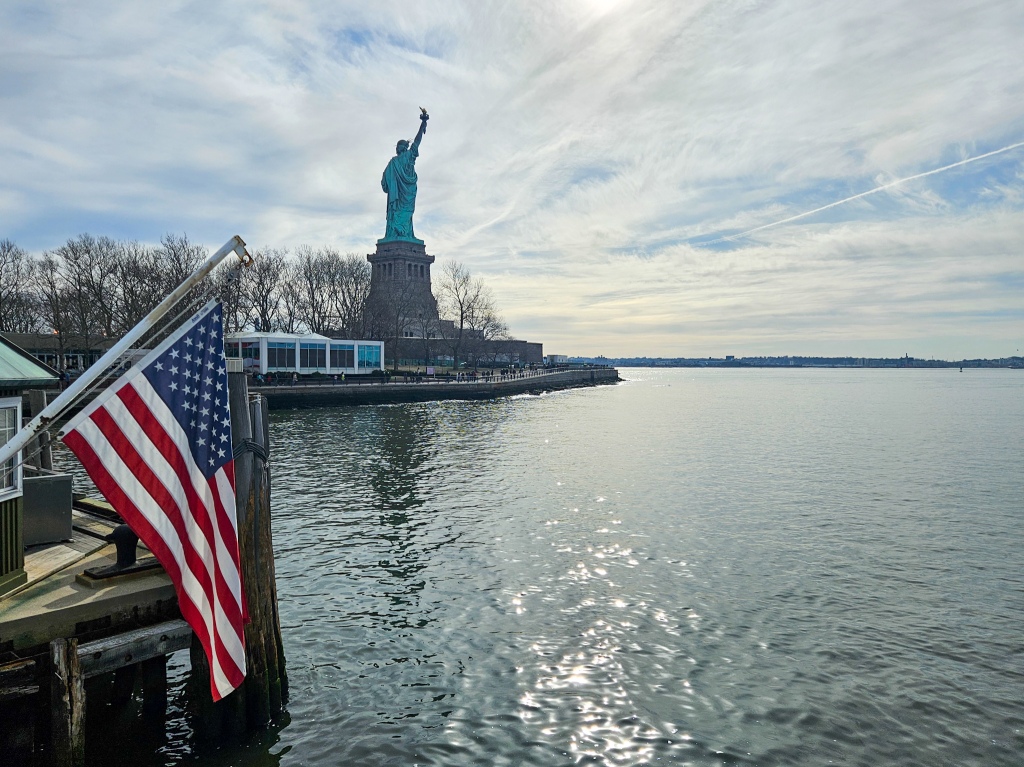
Ellis Island
We chose to stay on the boat and continue straight to Ellis Island, with only around 20 other people meaning we were the first arrivals of the day. Perfect. There is so much to see and do at the museum, so let’s start at the beginning.
Registry Room
Prior to 1890, individual states, rather than the Federal Government, regulated immigration into the United States. Castle Garden (now Castle Clinton), located in Battery Park, served as the immigration station for New York from 1855 to 1890. Approximately eight million immigrants passed through its doors, mostly from Northern European countries.
In the 1800s, rising political instability, economic distress, and religious persecution plagued Europe, fueling the largest mass human migration in the history of the world. The Federal government constructed a new immigration station on Ellis Island to serve the whole of America; which began receiving immigrants on January 1, 1892. Over the next 62 years, more than 12 million immigrants would arrive in the United States via Ellis Island.
Taking the stairs from the entrance to the second floor brings you up in the Registry Room. Whilst today it feels grand, for immigrant arrivals it would have been loud, confusing and scary. It’s here that new arrivals waited to be inspected and registered by Immigration Service officers. On many days, over 5,000 people would file through the space.
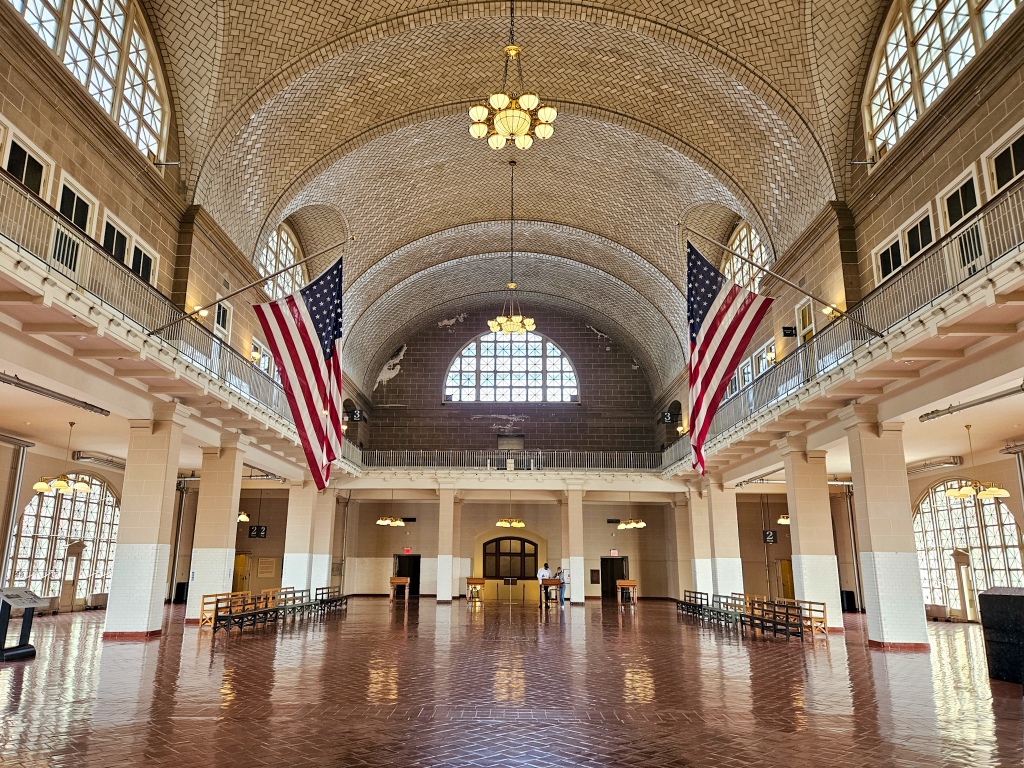
Peak Immigration Years
This gallery tells the story of immigration between the years of 1890 – 1920s, America’s peak immigration years when it had an “open door policy”. During this period, nearly 25 million immigrants of European origin arrived from Eastern, Southern, and Central Europe.
The gallery talks about these arrivals; why they came, what they did and where they went. Some interesting facts:
- Many arrivals from Scandinavia arrived in New York but settled in Minnesota (I guess this is why the NFL team is the Minnesota Vikings)
- A lot of German arrivals ended up in Cincinatti
- Italians tended to be over-indexed in road building. The old Italian story of arrival to America goes “Well, I came to America because I heard the streets were paved with gold. When I got here, I found out three things. 1) The streets weren’t paved with gold, 2) they weren’t paved at all and 3) I was expected to pave them”.
- Many Irish immigrants arrived after 1845 due to the famine in Ireland
- After 1880, larger steam-powered ships replaced sailing ships, which resulted in lower fares and greater immigrant mobility, increasing arrival volumes.
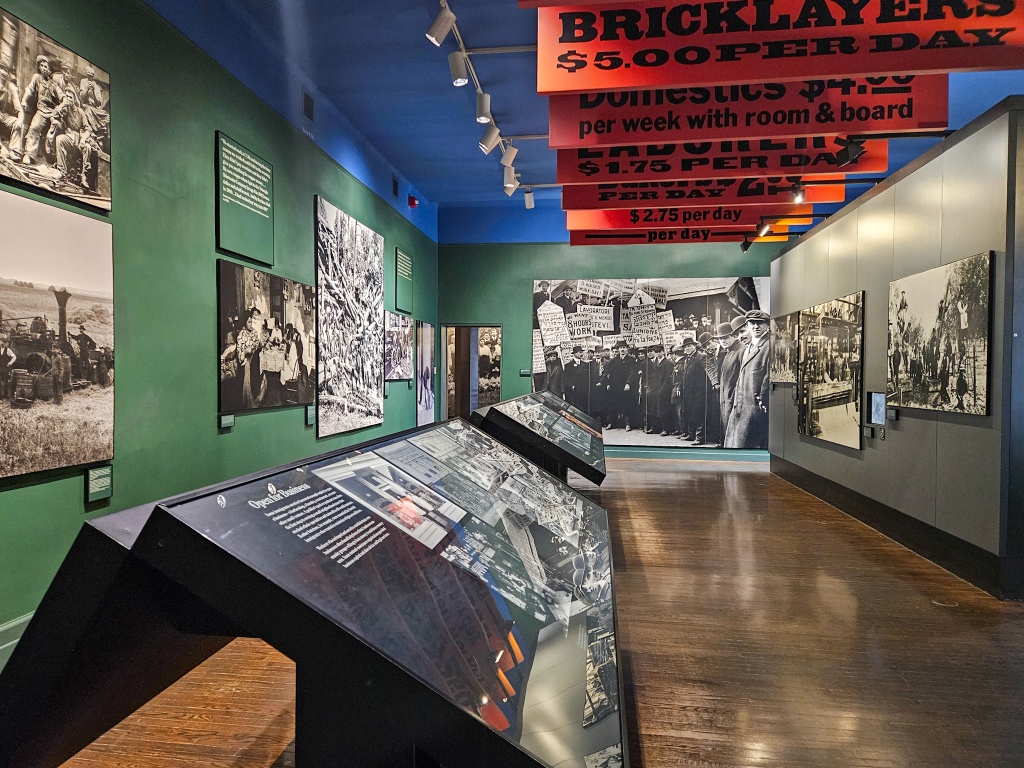
This large wave of immigration led to the emergence of organised xenophobia. By the 1890s, many (largely) well-off white, native born (descended from immigrant Brits or Dutch of course) started campaigning for immigration restrictions.
The Immigration Act of 1924 greatly restricted immigration and allowed processing at overseas embassies, marked the end of the era of mass immigration into New York and led to the closure of Ellis Island in 1954.
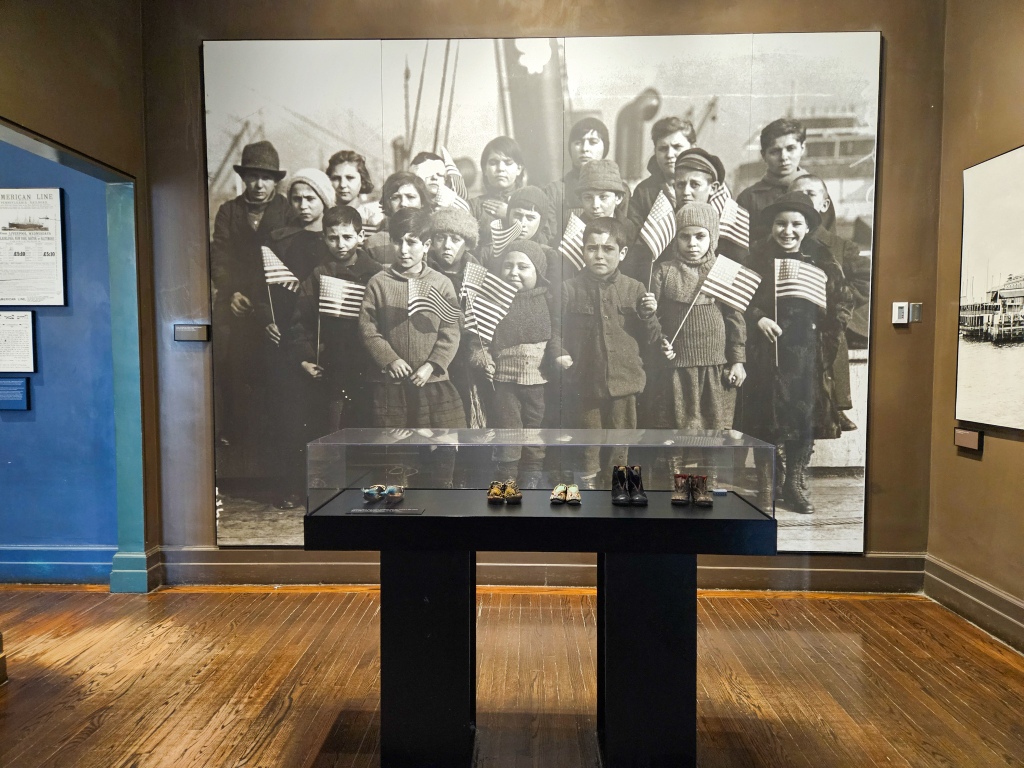
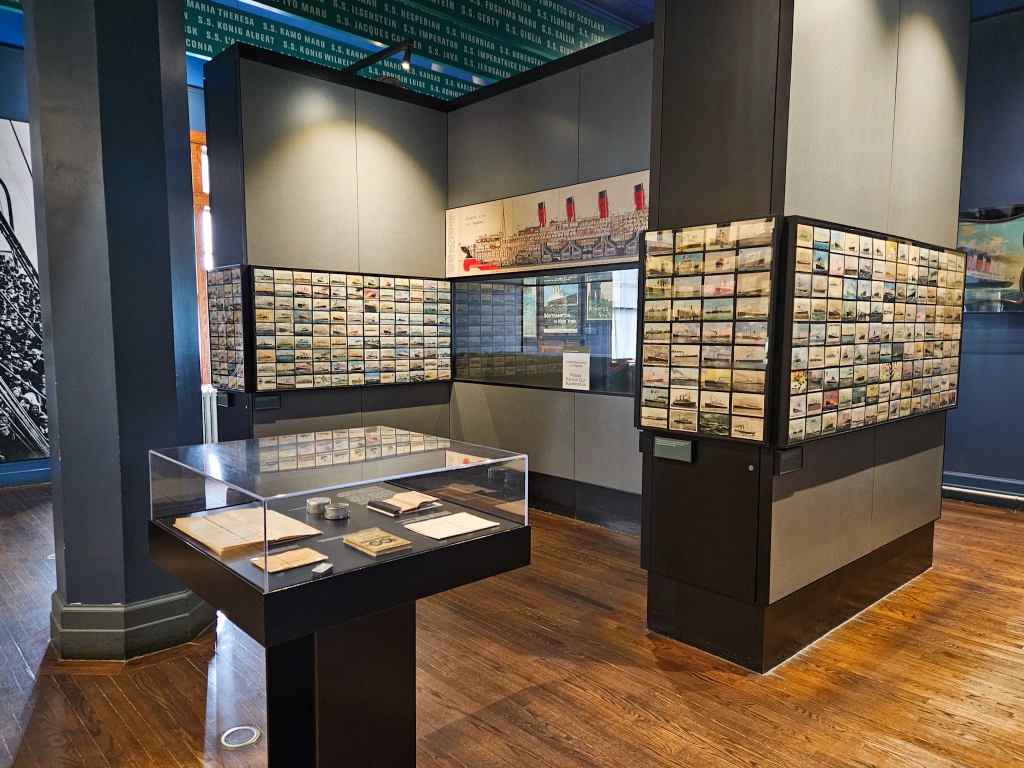
Through America’s Gate
This gallery focuses on what the experience was like for arrivals to Ellis Island.
The medical inspection was the first examination which an immigrant had to pass. The doctors and medical inspectors would look for any signs of illness or contagious diseases. If found, they would mark the immigrant with a chalk mark indicating the suspected illness, for further examination.
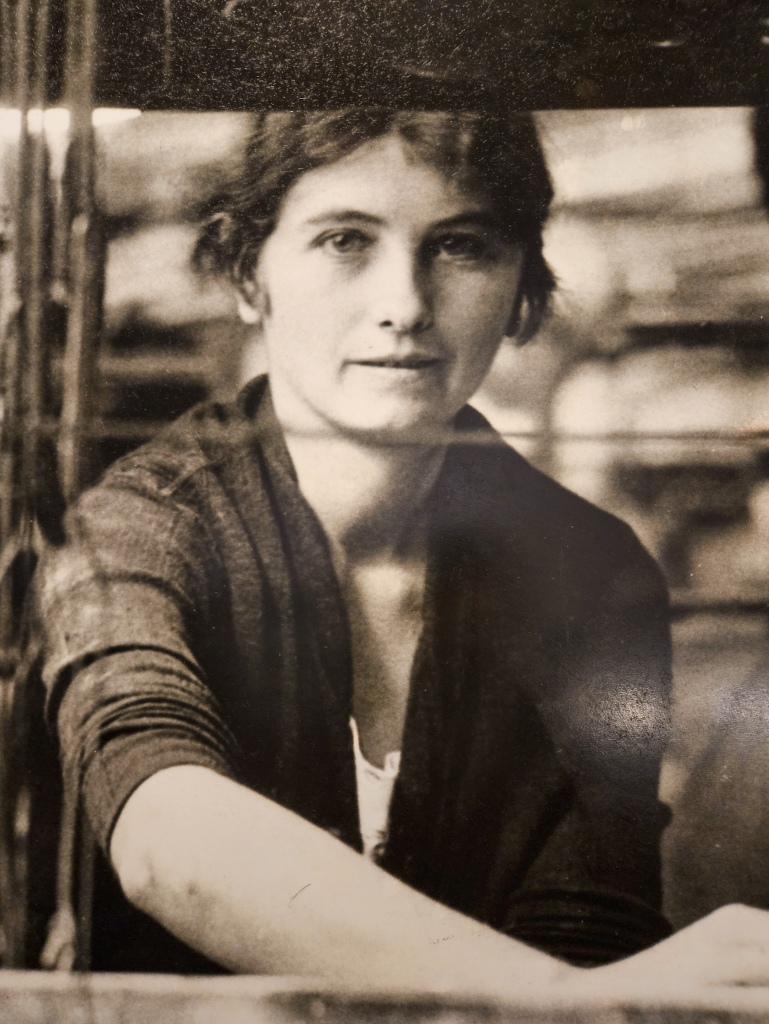
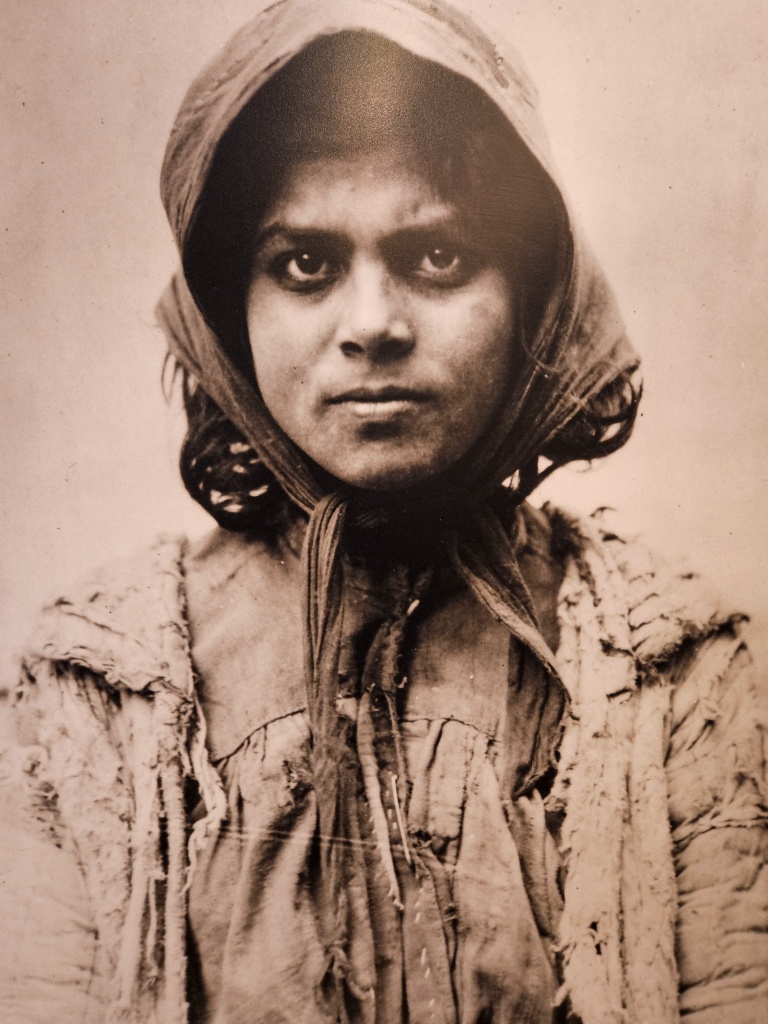
Inspectors then asked immigrants their name, home town, occupation, destination, and the amount of money they carried. Those allowed to pass continued downstairs. Those detained for additional legal examination waited for an opportunity to explain further in the Board of Special Inquiry room. About 1% of arrivals would be denied admission on legal grounds.
Later there were also intelligence tests. As arrivals often didn’t speak English and many were illiterate, this was measured by asking them to draw diamonds. The picture below shows diamond drawing (top = no schooling, never held a pen before, bottom = at least some schooling).

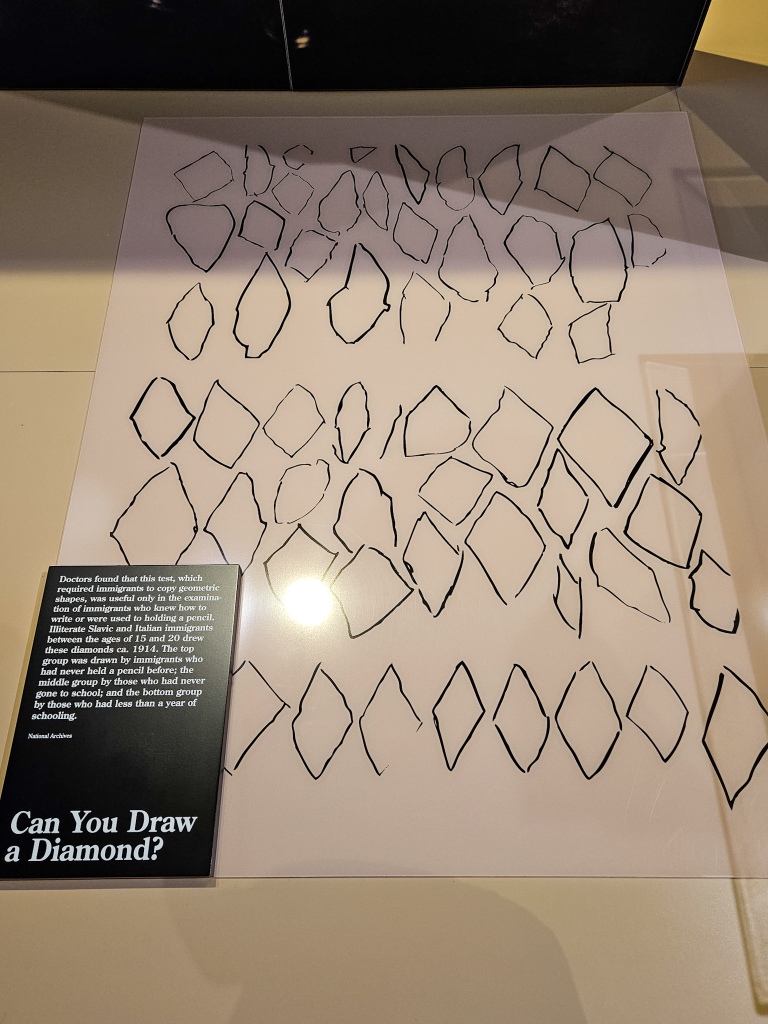
Treasures from Home
During this time, it was more than likely that immigrants would never see home again, given the cost and time required to visit. Most arrivals brought a mix of the functional and the familiar: Bibles and prayer books, family documents, handmade linens, crockery, and other possessions that represent centuries-old cultures and traditions.
I particularly loved the beautiful blanket a mother sewed partly at home in Eastern Europe, and then added to as the children were born; and the teddy bear donated by the Schneider family from Germany.
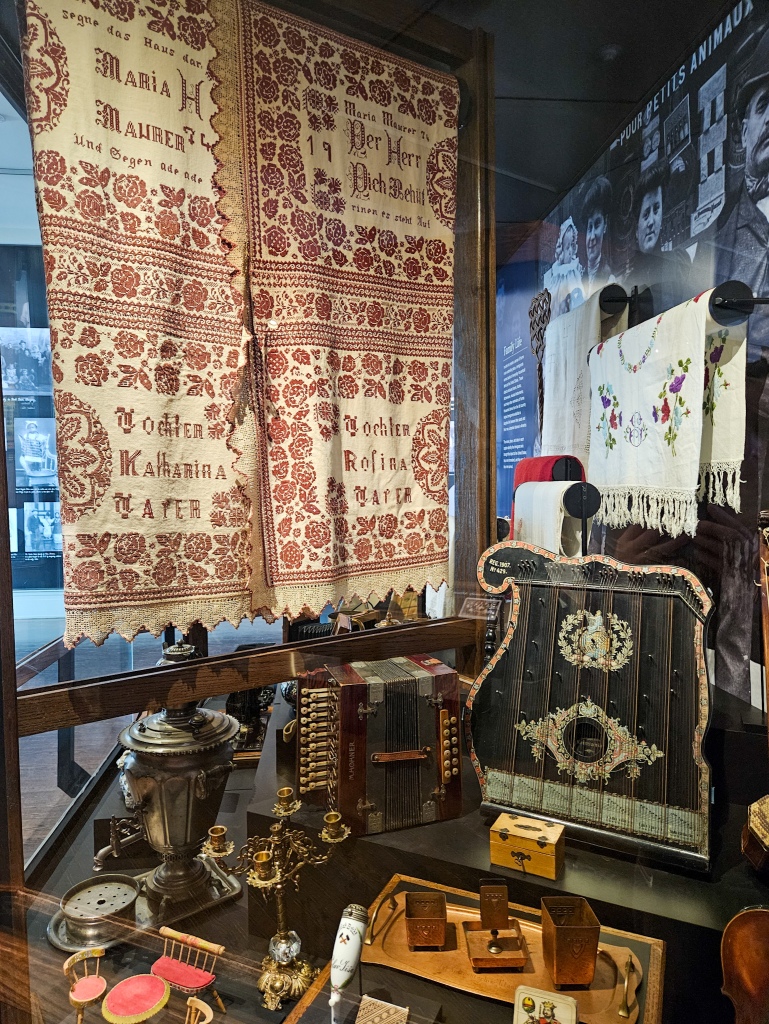
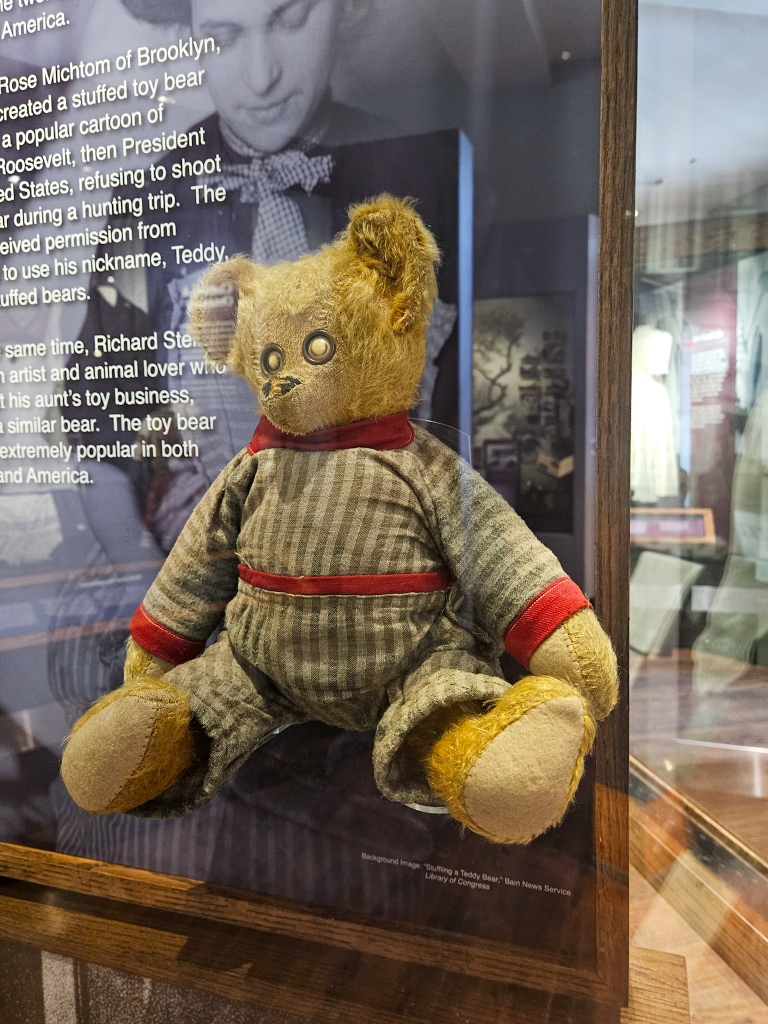
Journeys: The Peopling of America 1550-1890
This exhibition tells the story of immigration to America before Ellis Island was open. Initial settlers were of Dutch and British origin, and they largely settled along the East Coast. I would have absolutely loved to have explored this gallery as I find this period of history fascinating, but sadly it was closed on our visit.
Journeys: New Eras of Immigration 1945 – Present
This gallery focuses on immigration to American post Ellis Island. Immigration has changed so much, and is now far more accessible than it ever has been before given the speed and cost of land and air travel.
This gallery focuses in particular on stories of immigration from Central America (Mexico, El Salvador, Guatemala, Honduras etc) and the Middle East (particularly Iran). It highlights their reason for leaving, largely economic or security driven. It also highlights immigrants who have contributed to the US economy (e.g. Iranian immigrant Pierre Omidyar who founded eBay).
The exhibition also focuses on illegal immigration, a non feature of previous generations where there was an “open door policy”.
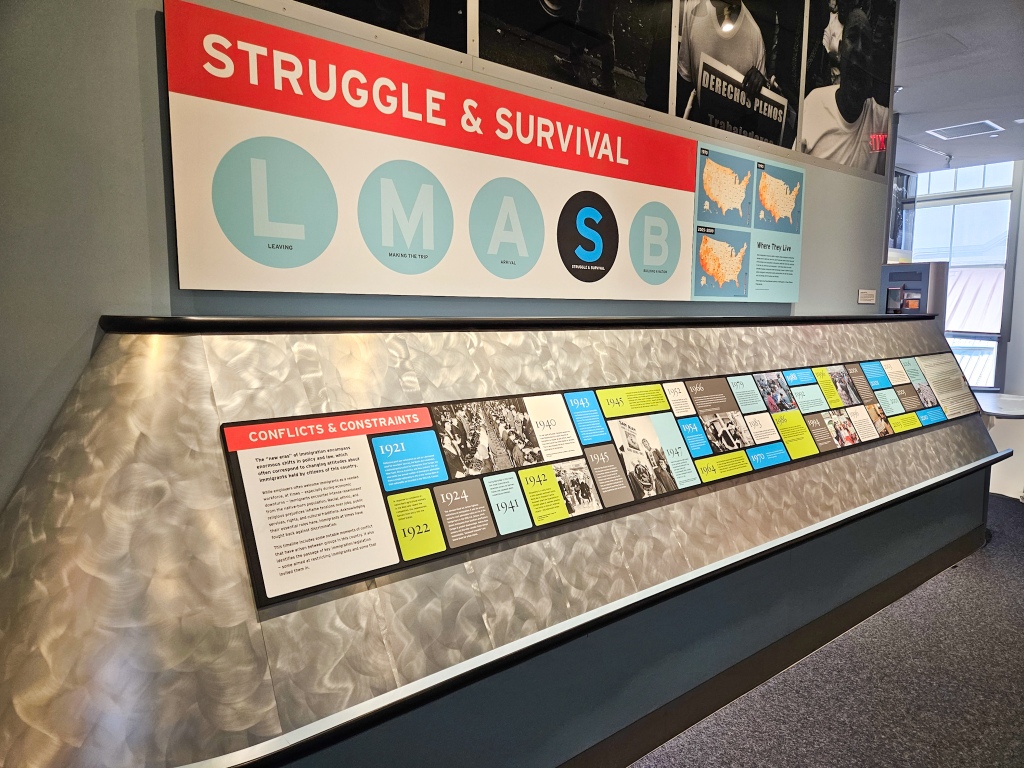
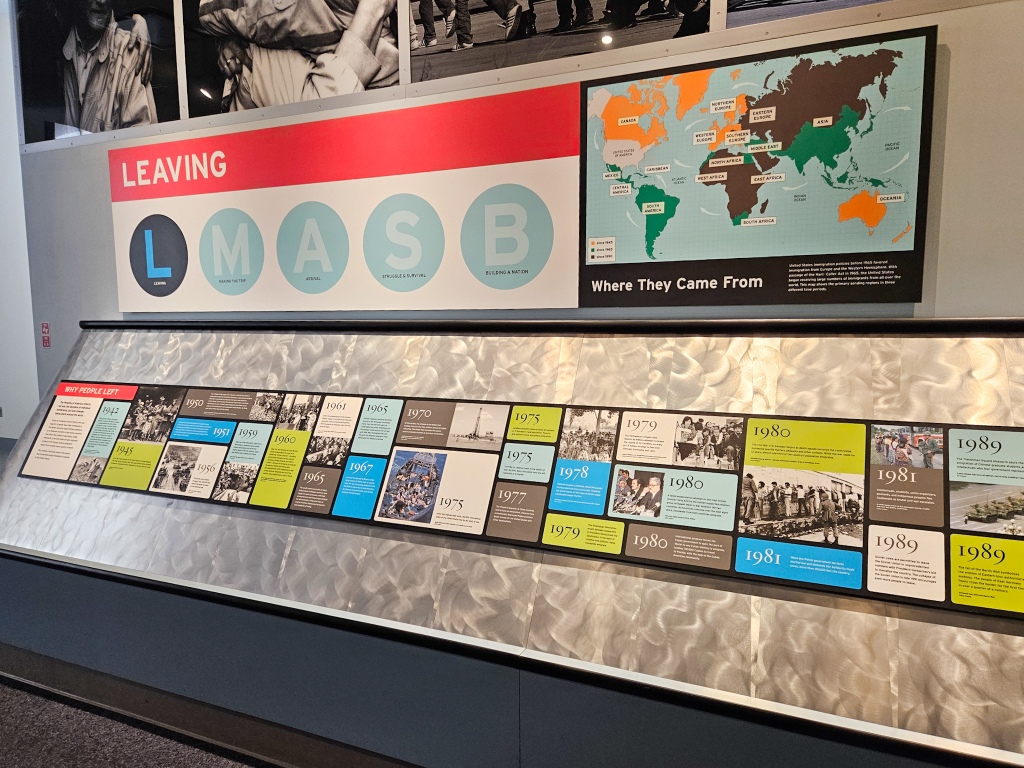
If there’s one thing I took away from my visit it’s that we are all human; many of us are looking for a better life and immigration is often the only option left open to people to do so. What I find so troubling is that in every stage of the immigration story of America, xenophobia is experienced by immigrants at the hands of descendants of previous generations of immigrants – it’s a horrifying, ongoing cycle.
After 5 hours in the museum (despite a closed gallery!) we were fatigued and ready for some food and drink. We headed back to the ferry in the glorious (but very cold) sunshine to go back to Manhattan. It was a truly wonderful day out and one I would recommend to anyone looking to learn about the history of the United States.
What do you think? Let me know in the comments below – stay safe and happy travelling!
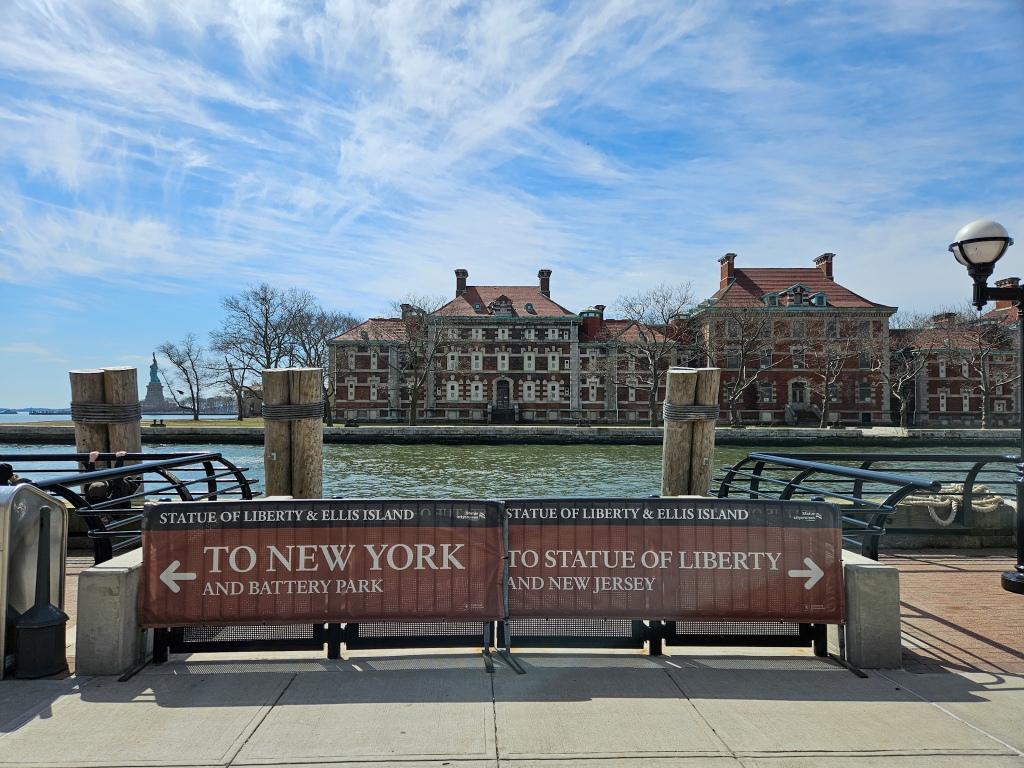

Leave a comment